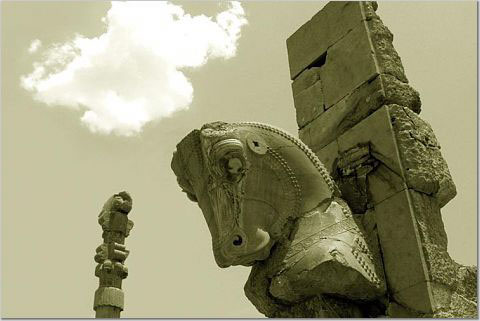

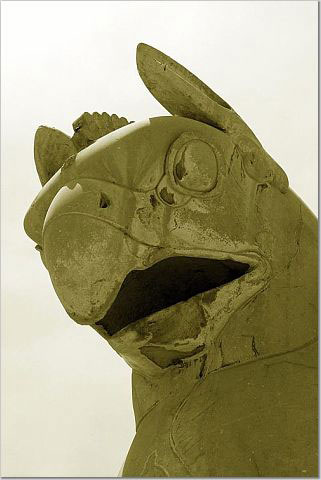


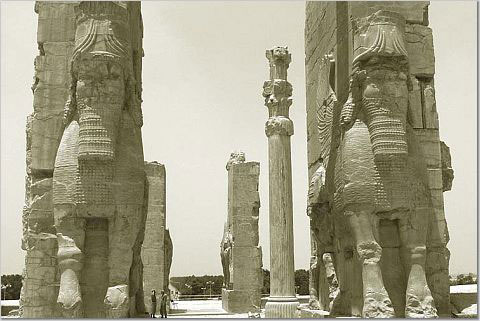
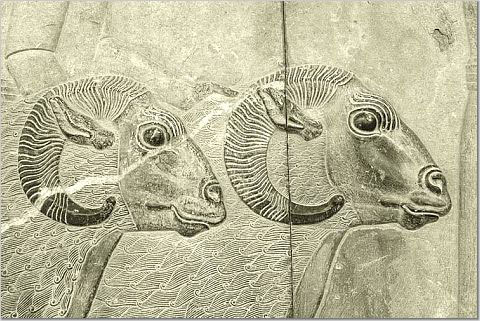
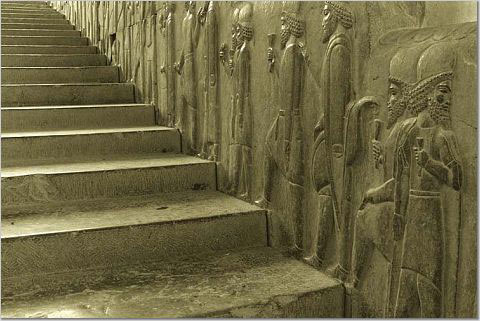

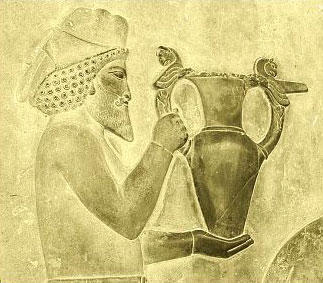
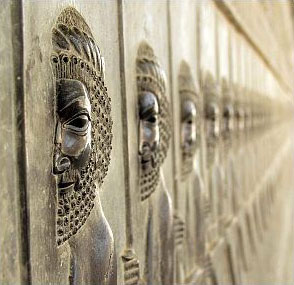
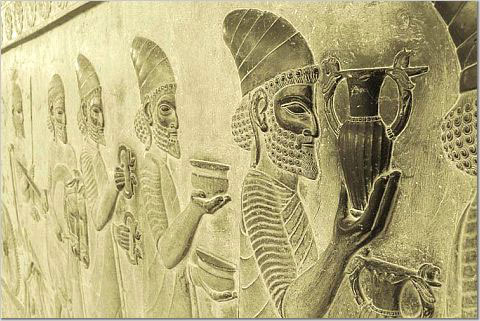
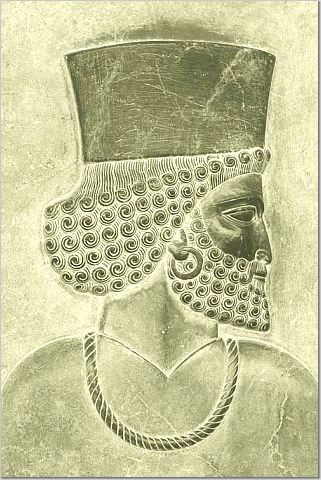
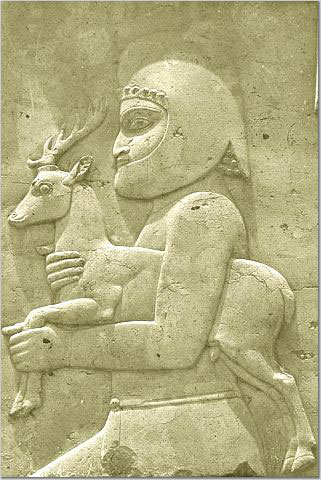
It's amazing the things which have survived, and particularly in this case considering that this particular faith was not necessarily well thought of by the ancient Hindu.All Consuming FaithGriffon vultures are dying across India, apparently succumbing to a mysterious illness. Wildlife experts are becoming increasingly concerned about the viability of one species in particular. But for India's ancient Parsee religion the vultures' decline poses a more practical problem. Parsees, the religious descendants of the Zoroastrians of ancient Persia, rely on vultures to dispose of their dead, and the bodies are piling up.
by Debora MacKenzie
5 August 2000
New Scientist magazineEarliest Civilizations of the Near East"The people of Catal Huyuk buried their dead below the platforms of their houses and shrines only after the flesh had been removed, probably for the sake of hygiene. The primary process of excarnation may have taken place in light structures, built of reeds and matting as depicted on the wall of a shrine, or by means of vultures." [p 86]
by James Mellaart
1965, LOC 65-19415
Library of Early Civilizations
"In this book we see the first beginnings of agriculture from somewhere around 9000 BC, continuing in cultures in which at first pottery, long thought to be the main criterion of a 'neolithic' culture, was not in fact made, and then before many centuries have elapsed, the first use of metals -- copper or lead or gold, cold-worked from the native metal from the sixth millennium BC. The old technological-evolutionary stages of Mesolithic, Neolithic, Chalcolithic and so on are rapidly losing their crisp outlines, but only because we are now able to perceive something which, because it is more muddled and imprecise, is more human." [Stuart Piggott, general editor's preface]
Regarding their ancient scriptures, Mary Settegast wrote:Dancing with Siva:"Asceticism and celibacy are condemned; purity and avoidance of defilement... are valued... Zoroastrianism stresses monotheism, while recognizing the universal sway of two opposite forces... Man's life... is a moral struggle, not a search for knowledge or enlightenment. He is put on the earth to affirm and approve the world, not to deny it, not to escape from it... Man has but one life. He also has the freedom to choose between good and evil... At death, each is judged and consigned to his deserved abode... Though there is resurrection of the dead, a judgment and a kingdom of heaven on earth... all sins are eventually burned away and all of mankind exists forever with Ahura Mazda. Hell, for the Zoroastrian, is not eternal."
Hinduism's Contemporary Catechism
by Satguru Sivaya Subramuniyaswami
[pp 558-559, "Zoroastrianism"]
Luciano Canforra wrote:Plato PrehistorianPerhaps three-fourths of the original Zend-Avesta... is believed to be lost... The Avesta was not written down until the Sassanian period (the third to seventh centuries A.D.)... Zarathustra's Gathas are particularly obscure... Not only do the Gathas appear to be a good deal older linguistically than even the oldest parts of the Younger Avesta, but the same characters who speak and act with immediacy... are represented in the Younger Avesta as belonging to a remote past... The Fravardin Yast [of the Younger Avesta] ...contains references to Iranian peoples who were apparently unknown to the earliest Achaemenid records of the sixth century B.C. And with the single exception of "Ragha," believed to be ancient Rayy near Tehran, no allusion is made to a known Iranian city or village... A generic use of the prophet's name might also explain the occasional indications in ancient literature that there was more than one historical Zarathustra. Pliny, for example, when referring to the Zarathustra born 6,000 years before Plato, remarked that "it is not so clear whether there was only one man of this name, or another one later on."
by Mary Settegast
[pp 212-214]
The followers of Zoroaster were persecuted by the hierarchy of Zervan. The worship of Zervan was largely abandoned in favor of Zoroastrianism, but may have hung on here and there until Islam arrived. Zervan temples are not known to me; maybe a search will turn up something. My guess is that Zervan was worshipped in shrines at geographically significant places (foot of the mountain pass, ford over the river) and on the outskirts of villages and towns. I think now of Petra, with its high places where great bonfires were built to worship their now-obscure deities.The Vanished LibraryThe translation of the Iranian writings attributed to Zoroaster, amounting to more than two million lines of verse, was remembered centuries later as a notable feat...
by Luciano Canforra
[pp 24]














Some of those source and quotes are rather strange.
PERSIA:
An empire which extended from India to Ethiopia, comprising one hundred and twenty-seven provinces, (Daniel 6), Esth. 1:1;
Government of, restricted by constitutional limitations, Esth. 8:8; (Daniel 6:8-12).
Municipal governments in, provided with dual governors, Neh. 3:9, 12, 16-18.
The princes advisory in matters of administration, (Daniel 6:1-7).
Status of women in, queen sat on the throne with the king, Neh. 2:6.
Vashti divorced for refusing to appear before the king's courtiers, Esth. 1:10-22; 2:4.
Israel captive in, 2 Chr. 36:20;
captivity foretold, Hos. 13:16.
Men of, in the Tyrian army, Ezek. 27:10.
Rulers of: Ahasuerus, Esth. 1:3.
Darius, Dan. 5:31; 6; 9:1.
Artaxerxes I, Ezra 4:7-24 .
Artaxerxes II, Ezra 7; Neh. 2; 5:14.
Cyrus, (2 Chr. 36:22), (2 Chr. 36:23), Ezra 1; 3:7; 4:3; 5:13, 5:14, 5:17; 6:3; Isa. 41:2, 41:3; 44:28; (Isaiah 45:1-8), 13; 46:11; 48:14, 15.
Princes of, Esth. 1:14.
System of justice, Ezra 7:11-26.
Prophecies concerning, Isa. 13: 17; 21:1-10; Jer. 49:34-39; 51:11-64; Ezek. 32:24, 25; 38:5; Dan. 2:31-45; 5:28; 7; 8; 11:1-4.